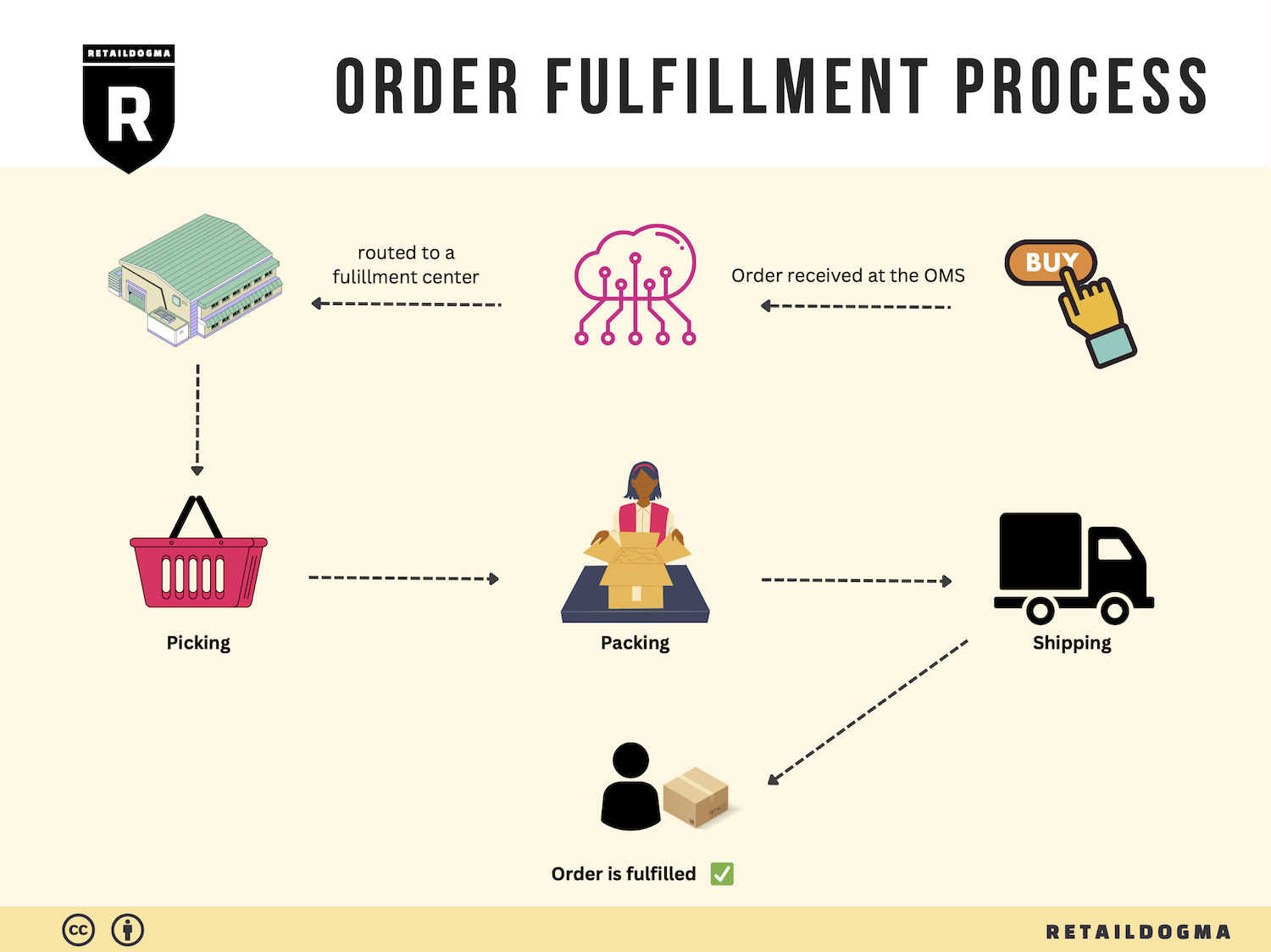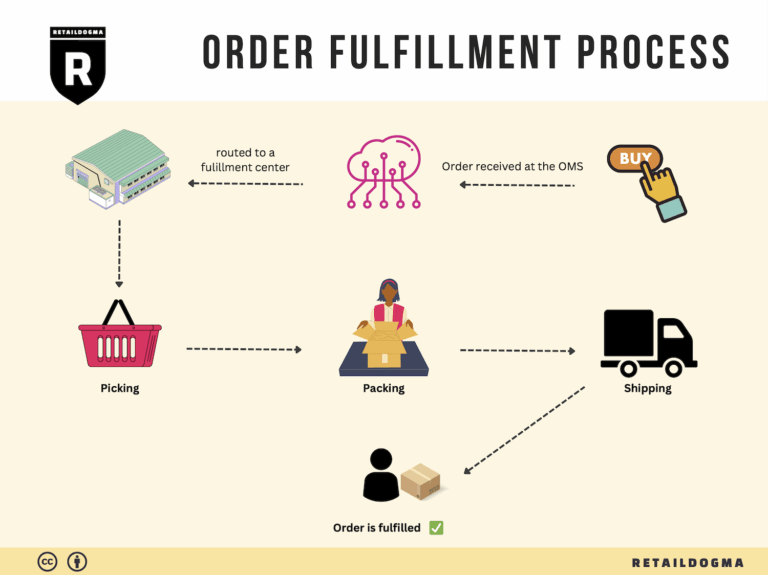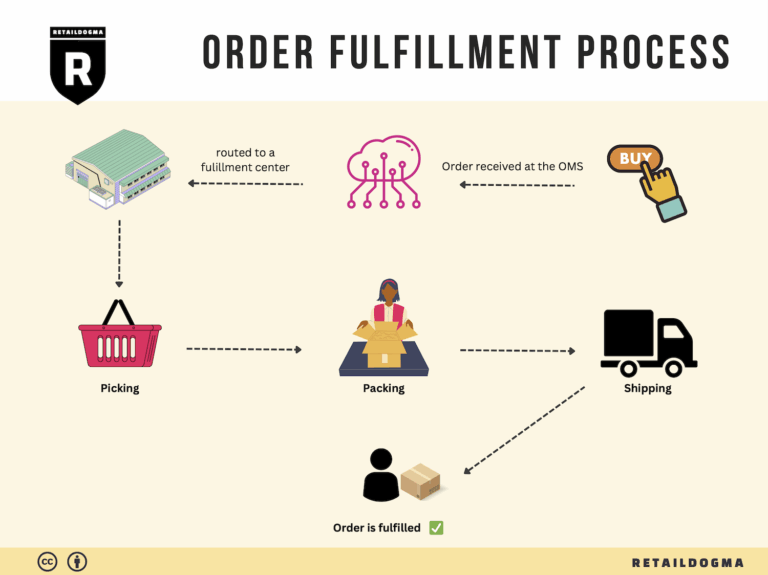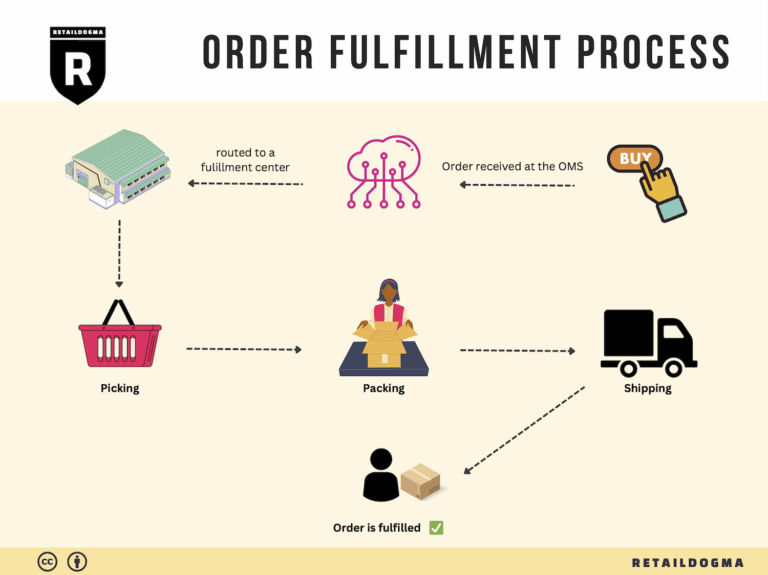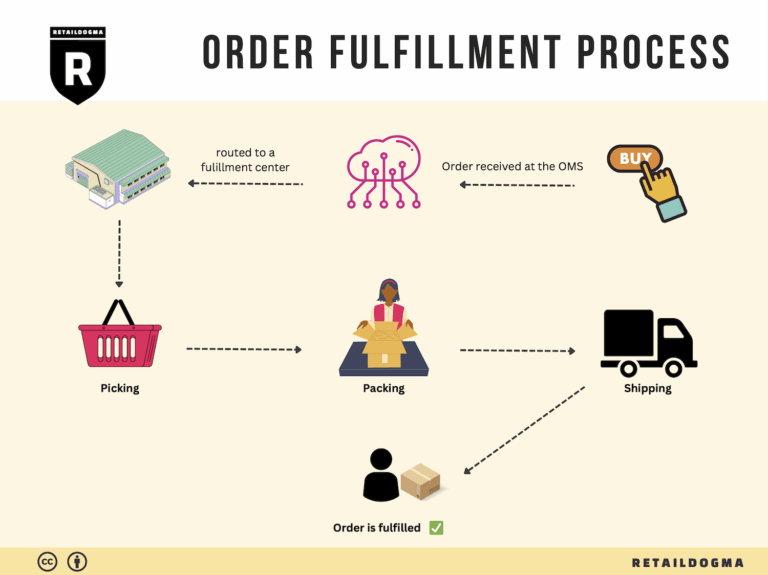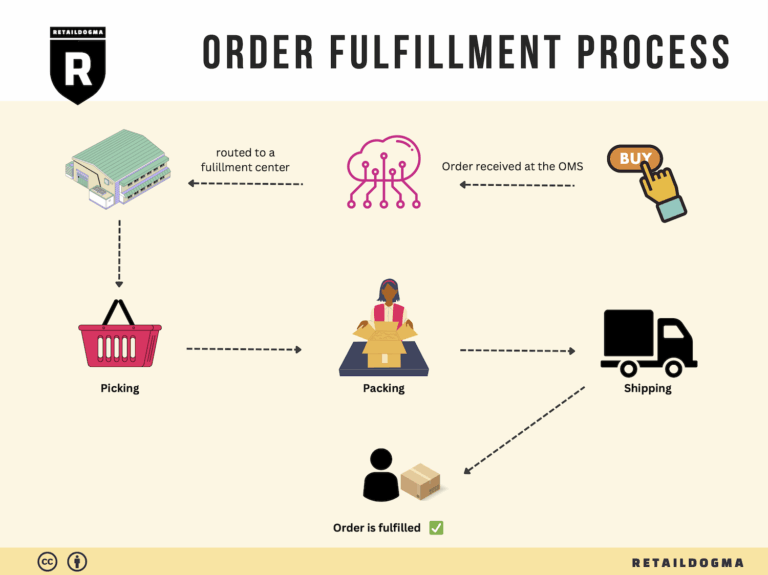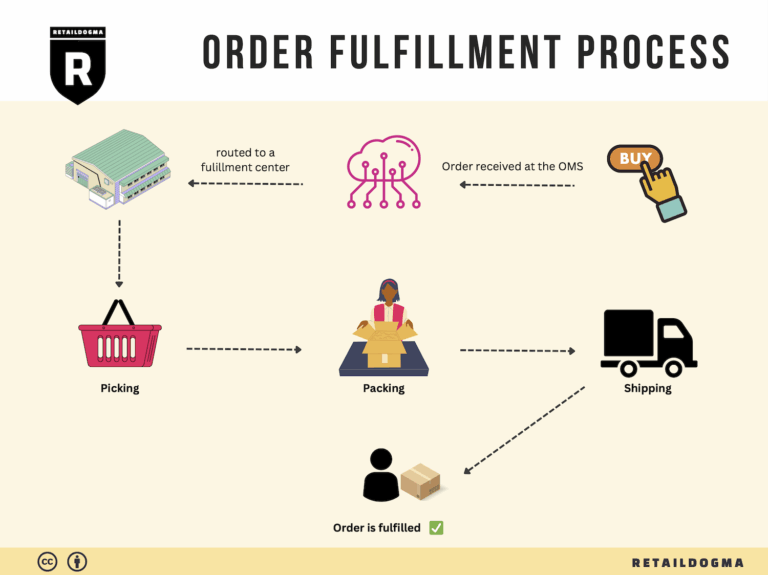How Order Fulfillment Works: A Step-by-Step Guide for Businesses
What is E-commerce Fulfillment? An Introduction for Growing Businesses
Understanding E-commerce Fulfillment
As an e-commerce business owner, one of the most common pain points you may encounter is the overwhelming task of packing and shipping orders. The excitement of making a sale can quickly turn into stress when faced with the logistical challenges of getting your products into the hands of your customers. This is where e-commerce fulfillment comes into play—a crucial process that ensures your customers receive their orders efficiently and accurately.
Fulfillment can be simply defined as the entire process of getting a product from your inventory to your customer’s doorstep. This process encompasses various steps, including inventory management, order processing, packing, shipping, and returns handling. For growing businesses, mastering fulfillment is vital not only for maintaining customer satisfaction but also for scaling operations effectively.
In this guide, we will explore the different models of e-commerce fulfillment available to you. You may have heard of Third-Party Logistics (3PL) and Fulfillment by Amazon (FBA), two popular options that can significantly impact your operational efficiency. Each model has its own advantages and challenges, and understanding these can help you make an informed choice based on your business needs.
We will also delve into the core services offered by fulfillment partners, such as inventory storage, order processing, and shipping options. Knowing what services are available allows you to align your fulfillment strategy with your business goals.
Choosing the right fulfillment partner is critical to your success. We will provide you with practical tips on what to look for in a partner, including their capabilities, technology, and customer service standards. This section aims to equip you with the knowledge needed to select a partner that complements your business model and growth aspirations.
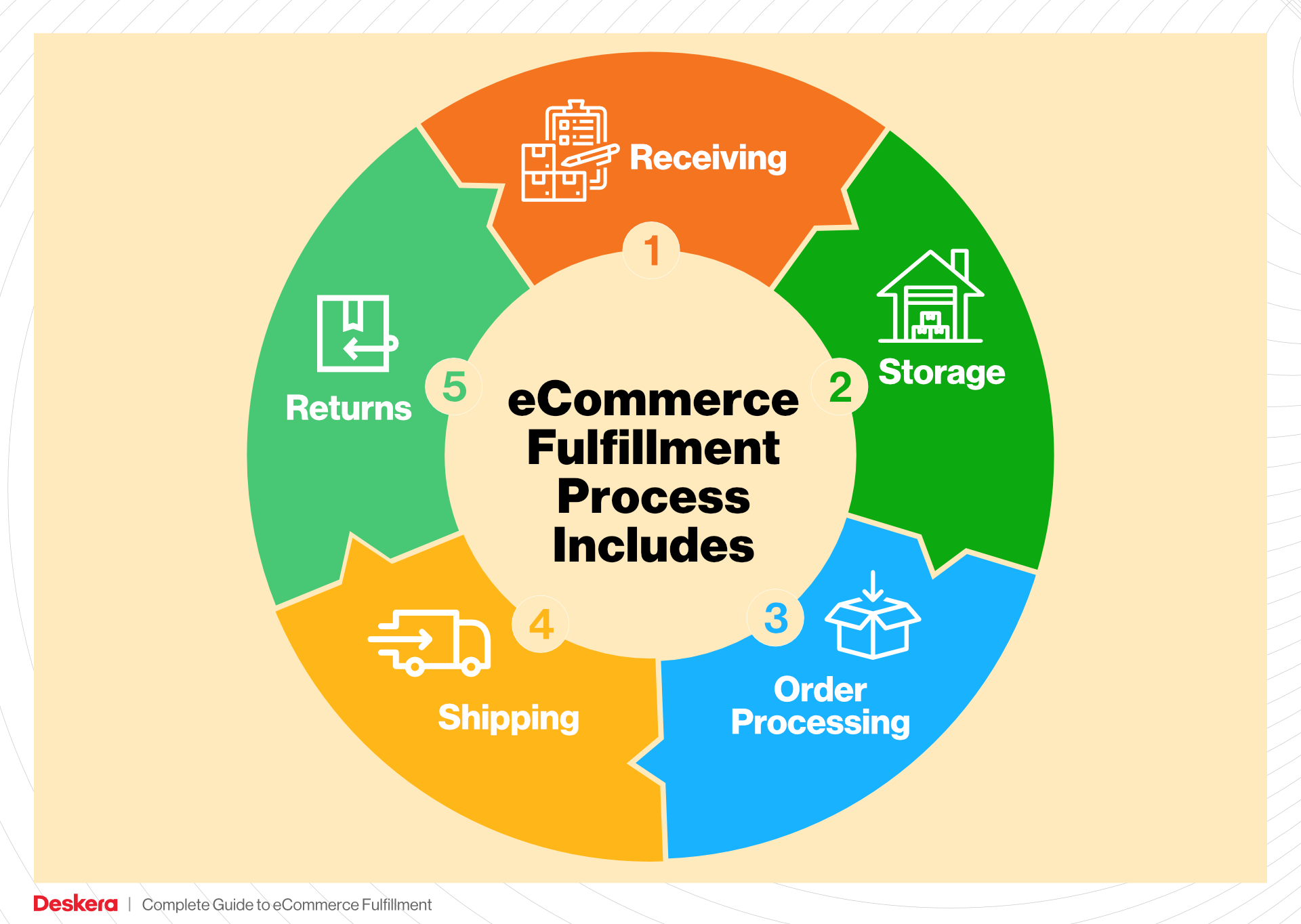
Pricing is another essential aspect we will cover. Understanding the cost structures associated with different fulfillment models will empower you to manage your budget effectively while still delivering a quality experience to your customers.
Ultimately, the goal of this guide is to empower you as a business owner or operations manager to make smart, informed decisions about your logistics strategy. By optimizing your e-commerce fulfillment process, you can not only improve customer satisfaction but also position your business for scalable growth in a competitive landscape.
What You’ll Learn In This Guide
- What is E-commerce Fulfillment? An Introduction for Growing Businesses
- The Order Fulfillment Process: From ‘Buy’ Button to Customer’s Door
- Comparing Fulfillment Models: In-House vs. 3PL vs. Dropshipping
- A Deep Dive into Amazon FBA: Pros, Cons, and Who It’s For
- Core Services Offered by Fulfillment Centers
- How to Choose a Fulfillment Partner: A 6-Point Checklist
- Understanding Fulfillment Pricing: A Breakdown of Common Fees
- Frequently Asked Questions (FAQs) about Fulfillment
- Conclusion: Is Outsourcing Fulfillment the Right Move for Your Business?
- Important Disclaimer
The Order Fulfillment Process: From ‘Buy’ Button to Customer’s Door
1. Receiving Inventory
The order fulfillment process begins with receiving inventory at the fulfillment center. This step involves the systematic intake of products from suppliers, which may include various goods that will eventually be sold to customers. Upon arrival, each product is checked against purchase orders to ensure that the correct quantities and items are received. This is where key terms like SKU (Stock Keeping Unit) come into play, as each product is assigned a unique SKU for identification.
Why is this step crucial? Accurate receiving is foundational for inventory management and overall supply chain efficiency. Any discrepancies at this stage can lead to stockouts or overstock situations, both of which can negatively impact sales and customer satisfaction. By ensuring that inventory is accurately received and recorded, businesses can maintain optimal stock levels, which is essential for meeting customer demand.
2. Warehouse Storage
Once inventory is received, it moves to warehouse storage. This step involves organizing and storing products in designated locations within the warehouse. Effective storage methods, such as FIFO (First In, First Out) or LIFO (Last In, First Out), may be employed depending on the nature of the products being stored.
The importance of this step lies in its impact on future operational efficiency. Proper organization allows for easier access to products, reduces the time spent searching for items, and minimizes the risk of damage or loss. An organized warehouse also facilitates smoother operations during the order picking phase, ultimately enhancing the speed and accuracy of fulfillment.
3. Order Picking
The third step in the order fulfillment process is order picking, where items are selected from storage to fulfill customer orders. This process typically involves generating pick lists, which are documents that outline the items and quantities needed for each order. Warehouse staff or automated systems then retrieve these items from their respective locations.
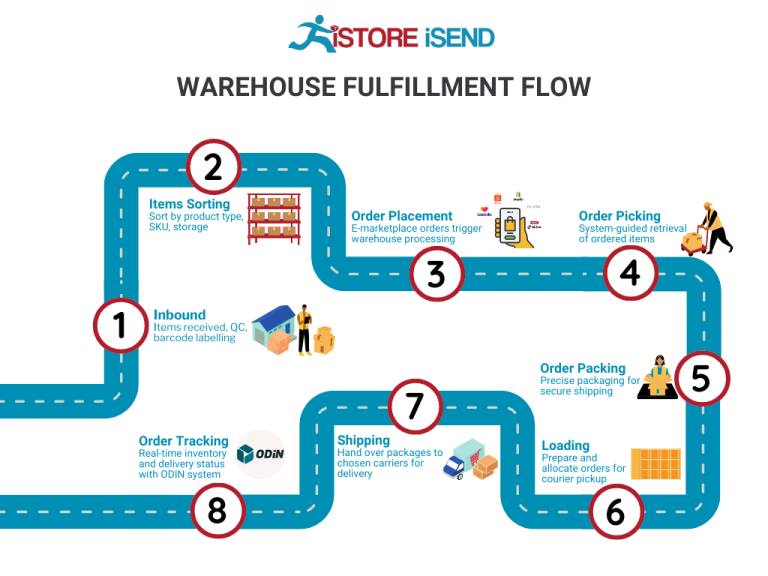
Order picking is a critical phase because it directly affects the accuracy and speed of order fulfillment. Mistakes made during picking can lead to incorrect shipments, which not only frustrates customers but also increases return rates and operational costs. Implementing efficient picking strategies, such as batch picking or zone picking, can help streamline this process, ensuring that orders are fulfilled accurately and in a timely manner.
4. Order Packing
After the items have been picked, they proceed to the order packing stage. Here, the selected products are carefully packed for shipment. This involves selecting appropriate packaging materials, ensuring that items are protected during transit, and labeling packages with shipping information.
The packing process is vital for several reasons. First, it helps to prevent damage during shipping, which can lead to customer dissatisfaction and increased costs due to returns. Second, effective packing can optimize shipping costs by ensuring that packages are not oversized, thus reducing dimensional weight charges. Moreover, including packing slips and promotional materials can enhance the customer experience and encourage repeat business.
5. Shipping & Delivery
The final step in the order fulfillment process is shipping and delivery. Once packed, orders are handed off to shipping carriers for delivery to customers’ doors. This stage involves selecting the most cost-effective and timely shipping methods, which may include options like standard delivery, express shipping, or curbside pickup.
Shipping and delivery are critical as they directly influence customer satisfaction and retention. Timely delivery can enhance customer loyalty, while delays can lead to frustration and negative reviews. Companies must monitor shipping performance metrics, such as delivery times and shipping costs, to continually refine their logistics strategy. Additionally, providing customers with tracking information can improve transparency and keep them informed about their order status.
In summary, the order fulfillment process consists of five key steps: receiving inventory, warehouse storage, order picking, order packing, and shipping & delivery. Each step plays a vital role in ensuring that orders are processed efficiently and accurately, ultimately leading to a positive customer experience. By optimizing each phase of this process, e-commerce businesses can enhance their operational efficiency and scale their logistics effectively.

Comparing Fulfillment Models: In-House vs. 3PL vs. Dropshipping
Fulfillment Models Comparison
| Model | Who Handles Inventory | Best For (Business Stage) | Key Advantage | Key Disadvantage |
|---|---|---|---|---|
| In-House Fulfillment | Business owner or internal team | Established businesses with stable sales | Full control over inventory and operations | High overhead costs and resource-intensive |
| Third-Party Logistics (3PL) | Third-party provider | Growing businesses scaling operations | Access to expertise and resources without heavy investment | Less control over inventory and potential quality issues |
| Dropshipping | Supplier or manufacturer | Startups and small businesses | Low startup costs and minimal risk | Lower profit margins and reliance on supplier reliability |
In-House Fulfillment
In-house fulfillment involves a business managing its own inventory, storage, and order processing. This model is typically adopted by established businesses with a consistent sales volume and the resources to maintain a warehouse and logistics team. One of the primary advantages of in-house fulfillment is the total control it offers over inventory management, order processing, and customer service. This control allows businesses to tailor their fulfillment processes to their specific needs, potentially leading to enhanced customer satisfaction and loyalty. However, the key disadvantage of this model is the significant overhead cost associated with maintaining a warehouse, hiring staff, and investing in fulfillment technology. As a business scales, these costs can become prohibitive, making in-house fulfillment less viable for rapid growth.
Third-Party Logistics (3PL)
Third-party logistics (3PL) refers to outsourcing the logistics and fulfillment processes to a specialized company. This model is particularly beneficial for growing businesses looking to scale operations without the need for heavy capital investment in warehousing and logistics infrastructure. By partnering with a 3PL provider, businesses gain access to a network of warehouses, transportation services, and fulfillment expertise that can streamline operations and improve delivery times. The key advantage of using a 3PL is that it allows businesses to focus on their core competencies—such as marketing and product development—while leaving the complexities of logistics to experts. However, a notable disadvantage is the reduced control over inventory and fulfillment processes, which can lead to challenges in maintaining quality standards and managing customer expectations. Businesses must carefully vet potential 3PL partners to ensure alignment with their operational goals.
Dropshipping
Dropshipping is a fulfillment model where the retailer does not keep products in stock but instead transfers customer orders directly to a supplier, who then ships the products directly to the customer. This model is especially appealing for startups and small businesses due to its low startup costs and minimal financial risk. Since there is no need to invest in inventory upfront, entrepreneurs can test products and scale their offerings without significant overhead. Additionally, dropshipping allows for a broader product range without the burden of managing inventory. However, the key disadvantage lies in the lower profit margins typically associated with dropshipping and the reliance on suppliers for quality and shipping reliability. If a supplier fails to deliver on time or provides subpar products, it can damage the retailer’s reputation and customer satisfaction. As a result, businesses must establish strong relationships with reliable suppliers to mitigate these risks.
Conclusion
Choosing the right fulfillment model is crucial for e-commerce business owners, operations managers, and entrepreneurs looking to scale. Each model—whether in-house fulfillment, third-party logistics, or dropshipping—has its distinct advantages and disadvantages. Understanding these differences allows businesses to align their fulfillment strategies with their operational capabilities and growth objectives, ultimately enhancing efficiency and customer satisfaction. As the e-commerce landscape continues to evolve, it is essential for businesses to periodically reassess their fulfillment strategies to ensure they remain competitive and responsive to market demands.
A Deep Dive into Amazon FBA: Pros, Cons, and Who It’s For
Understanding Fulfillment by Amazon (FBA)
Fulfillment by Amazon (FBA) is a service provided by Amazon that allows e-commerce sellers to store their products in Amazon’s fulfillment centers. In return, Amazon takes care of storage, packaging, and shipping of products directly to customers. This service enables sellers to leverage Amazon’s extensive logistics network, allowing them to reach millions of potential buyers while focusing on growing their business.
How FBA Works
-
Setup: Sellers create an Amazon seller account and enroll in the FBA program. They then list their products on Amazon and send their inventory to Amazon’s fulfillment centers.
-
Storage: Amazon stores the products in their warehouses until a customer places an order. Sellers can monitor inventory levels through the Amazon Seller Central dashboard.
-
Order Fulfillment: When an order is placed, Amazon picks, packs, and ships the product to the customer. This includes handling customer service and returns.
-
Customer Service: Amazon takes care of all customer interactions related to the order, including inquiries and returns, further enhancing the customer experience.
-
Payment: After the sale, sellers receive payment from Amazon, minus FBA fees and other applicable charges.
Pros of Using FBA
1. Prime Eligibility
One of the most significant advantages of using FBA is that products become eligible for Amazon Prime, which attracts a vast customer base. Prime members are more likely to purchase items with the Prime badge due to the benefits of fast, free shipping. This can lead to increased sales and higher visibility for your products.
2. Customer Trust
By utilizing FBA, sellers benefit from Amazon’s established reputation for reliability and customer service. Customers often feel more comfortable purchasing from sellers who use FBA, knowing that they will receive their orders promptly and that any issues will be handled by Amazon.
3. Multi-Channel Fulfillment
FBA is not limited to Amazon sales alone. Sellers can use FBA for multi-channel fulfillment, meaning they can fulfill orders from other platforms (like eBay or their own website) using the same inventory stored in Amazon’s fulfillment centers. This streamlines operations and provides a consistent shipping experience across different sales channels.
4. Scalability
FBA allows businesses to scale without the need for extensive logistics management. As sales grow, sellers can send larger quantities of inventory to Amazon, and the fulfillment service can handle the increased order volume without additional investments in warehousing or staffing.
5. Automation of Logistics
With FBA, sellers can automate many logistics tasks, such as inventory management, packing, and shipping. This allows them to focus on other aspects of their business, such as marketing and product development.
Cons of Using FBA
1. High Fees
While FBA offers many benefits, it also comes with a range of fees that can cut into profit margins. These include storage fees for inventory stored in Amazon warehouses and fulfillment fees for each item sold. Sellers must carefully calculate these costs to ensure profitability.
2. Strict Inventory Rules
Amazon has stringent guidelines for inventory management. Sellers must adhere to specific packaging, labeling, and shipping standards. Failure to comply can result in additional fees or even suspension of selling privileges.
3. Commingling Risks
FBA products may be commingled with inventory from other sellers. This means that when a customer orders a product, they may receive an item that is not from the original seller. This can lead to quality control issues and complications in managing returns, especially if the seller’s product is of a different quality than the commingled items.
4. Loss of Control
When using FBA, sellers relinquish some control over their fulfillment process. This includes the handling of customer service and returns, which may not always align with the seller’s business practices or values.
5. Inventory Limitations
Amazon imposes limits on how much inventory a seller can store in their fulfillment centers, especially for new sellers. This can hinder growth if sellers cannot stock enough products to meet demand.
Who is FBA Best For?
Fulfillment by Amazon is particularly well-suited for:
-
Small to Medium-Sized Businesses: Businesses looking to scale quickly without investing heavily in logistics can benefit from FBA’s infrastructure.
-
Brands with High Sales Volume: Sellers with a consistent sales volume can absorb FBA fees more easily and leverage Prime eligibility to drive additional sales.
-
Sellers with Limited Fulfillment Experience: New e-commerce entrepreneurs who may lack experience in logistics can utilize FBA to simplify the shipping process and focus on growing their business.
-
Multi-Channel Sellers: Those selling on multiple platforms can streamline their operations by using FBA for fulfillment, ensuring a consistent customer experience.
-
Sellers of Non-Seasonal Products: Businesses with year-round demand may find FBA beneficial, as they can maintain consistent inventory levels without the worry of seasonal fluctuations.
In conclusion, Fulfillment by Amazon offers a powerful solution for many e-commerce businesses, combining the advantages of Amazon’s logistics network with the potential for increased sales. However, sellers must weigh these benefits against the associated costs and operational challenges to determine if FBA aligns with their business goals.
Core Services Offered by Fulfillment Centers
Inventory Management & Warehousing
Inventory management and warehousing are foundational services provided by fulfillment centers. This involves the systematic tracking of inventory levels, orders, sales, and deliveries. Fulfillment centers utilize sophisticated software systems that provide real-time visibility into stock levels, allowing e-commerce businesses to maintain optimal inventory levels without overstocking or stockouts.
Benefits:
– Enhanced Efficiency: By centralizing inventory management, fulfillment centers reduce the complexity of handling stock across multiple locations. This streamlining leads to quicker decision-making and operational efficiencies.
– Cost Reduction: Effective inventory management minimizes holding costs and reduces waste from unsold goods. Businesses can allocate resources more efficiently, focusing on products that sell well.
– Improved Customer Satisfaction: With accurate inventory data, businesses can ensure that popular items are always in stock, reducing backorders and enhancing customer trust in the brand.
Pick and Pack Services
Pick and pack services refer to the process of retrieving items from inventory (picking) and preparing them for shipment (packing). Fulfillment centers employ trained staff and automated systems to ensure accuracy and efficiency in this process. Orders are quickly assembled, packed securely, and labeled for delivery, ensuring a streamlined operation.
Benefits:
– Speed and Accuracy: Fulfillment centers often employ advanced technologies such as barcode scanning and automated picking systems to ensure orders are fulfilled quickly and accurately, which is crucial for maintaining customer satisfaction.
– Scalability: As your e-commerce business grows, fulfillment centers can easily scale operations to handle increased order volumes without the need for additional workforce training or infrastructure investment.
– Custom Packaging Options: Many fulfillment centers offer customizable packaging solutions, allowing businesses to enhance brand visibility and create a memorable unboxing experience for customers.
Kitting and Assembly
Kitting and assembly involve grouping multiple items together to create a single product offering. This service is particularly beneficial for businesses that sell products that are often bundled together, such as gift sets or promotional packages. Fulfillment centers can handle the assembly process, ensuring that items are packaged correctly and efficiently.
Benefits:
– Time Savings: Outsourcing kitting and assembly to fulfillment centers frees up internal resources, allowing your team to focus on core business functions such as marketing and product development.
– Cost Efficiency: By consolidating multiple SKUs into a single package, businesses can often reduce shipping costs, as sending one package is cheaper than sending several individual items.
– Enhanced Marketing Opportunities: Kitting allows for the creation of unique product offerings that can attract customers and increase average order value. Businesses can promote special bundles during seasonal events or holiday sales, driving higher sales volume.
Returns Management (Reverse Logistics)
Returns management, or reverse logistics, refers to the process of handling returned products. This service is essential for e-commerce businesses, as returns can significantly impact profitability. Fulfillment centers provide streamlined processes for receiving, inspecting, and restocking returned items, helping businesses manage this aspect efficiently.
Benefits:
– Streamlined Processes: By outsourcing returns management, businesses can ensure that returns are processed quickly and efficiently, reducing the time products spend in limbo and allowing for faster restocking.
– Data Insights: Fulfillment centers often track returns data, providing valuable insights into customer behavior and product performance. This information can help businesses make informed decisions about inventory, product quality, and customer service improvements.
– Improved Customer Experience: A hassle-free returns process enhances customer satisfaction and encourages repeat business. When customers know they can easily return items, they are more likely to make purchases, even if they are unsure about a product.
Conclusion
In summary, fulfillment centers offer a suite of core services that can significantly enhance the operational efficiency of e-commerce businesses. By leveraging services such as inventory management, pick and pack, kitting, and returns management, businesses can focus on growth while ensuring that their logistics operations are optimized. These services not only streamline processes but also contribute to improved customer satisfaction and ultimately drive sales. As e-commerce continues to evolve, partnering with a capable fulfillment center can provide the competitive edge needed to succeed in a fast-paced market.
How to Choose a Fulfillment Partner: A 6-Point Checklist
Location & Warehouse Network
Why It’s Important:
The geographical location of your fulfillment partner’s warehouses directly impacts shipping times and costs. A partner with a well-distributed network can help you reach your customers faster, especially if you are selling nationally or internationally.
Questions to Ask:
– Where are your warehouses located, and how many do you operate?
– How do you determine which warehouse will fulfill an order?
– Do you have plans to expand your warehouse network in the near future?
Technology & Integrations
Why It’s Important:
In today’s fast-paced e-commerce environment, having robust technology and seamless integrations is crucial for efficient order processing, inventory management, and tracking. A partner with advanced systems can provide real-time data, automate processes, and integrate with your existing e-commerce platforms.
Questions to Ask:
– What technology do you use for order management and inventory tracking?
– Can your systems integrate with our e-commerce platform (e.g., Shopify, WooCommerce)?
– Do you offer API access for real-time data exchange?
– How do you handle updates and system maintenance?
Specializations (e.g., Cold Storage, Oversized Items)
Why It’s Important:
Depending on the nature of your products, you may require specialized services. For example, if you sell perishable goods, a partner with cold storage facilities is essential. Similarly, if you deal with oversized items, ensure your fulfillment partner can accommodate these needs without incurring excessive costs.
Questions to Ask:
– What types of products do you specialize in handling?
– Do you have specific facilities for temperature-sensitive items?
– How do you manage inventory for oversized or bulky products?
Scalability & Capacity
Why It’s Important:
As your business grows, your fulfillment needs will evolve. A capable partner should be able to scale their services to accommodate increased order volumes without compromising on service quality. Understanding their capacity can prevent operational bottlenecks as your business expands.
Questions to Ask:
– What is your current capacity for handling orders, and how do you manage peak seasons?
– Can you scale up operations if our order volume increases significantly?
– How do you handle overflow inventory or unexpected spikes in demand?
Pricing and Contracts
Why It’s Important:
Pricing structures can vary widely among fulfillment partners. It’s essential to understand all potential costs, including storage fees, pick and pack fees, shipping rates, and any additional charges for special services. A transparent pricing model will help you budget accurately and avoid surprises.
Questions to Ask:
– Can you provide a detailed breakdown of your pricing structure?
– Are there any additional fees we should be aware of (e.g., for returns, seasonal changes)?
– What are the terms of your contract, and is there flexibility for renegotiation?
Customer Support & Reviews
Why It’s Important:
Effective customer support is vital for resolving issues quickly and maintaining smooth operations. Researching reviews and testimonials can provide insights into how a partner handles challenges and interacts with clients. A responsive partner can help you avoid disruptions in your supply chain.
Questions to Ask:
– What customer support channels do you offer (e.g., phone, email, chat)?
– What are your support hours, and how quickly can we expect responses to inquiries?
– Can you share case studies or references from similar businesses?
– How do you handle issues or errors in order fulfillment?
Conclusion
Choosing the right fulfillment partner is a critical decision that can significantly impact your e-commerce business’s efficiency, customer satisfaction, and bottom line. By using this checklist, you can systematically evaluate potential partners based on key operational criteria. Conduct thorough due diligence by asking the right questions and gathering as much information as possible to ensure a successful partnership that will support your growth ambitions.
Understanding Fulfillment Pricing: A Breakdown of Common Fees
Initial Setup Fees
Initial setup fees are one-time charges that e-commerce businesses may incur when beginning their relationship with a fulfillment center. These fees typically cover the costs associated with onboarding, which may include account setup, system integration, and initial inventory processing.
The calculation of initial setup fees can vary significantly among fulfillment providers. Some may charge a flat fee, while others may base their costs on the complexity of the integration or the volume of products being introduced into their system. Businesses should inquire about what specific services are included in these fees to avoid unexpected costs later on.
Receiving Fees
Receiving fees are charged when a fulfillment center accepts and processes inventory shipments from suppliers or manufacturers. This fee generally includes the labor required to unload, inspect, and record the incoming goods into the warehouse management system.
These fees are typically calculated per shipment or per unit received. For instance, a fulfillment center may charge a flat rate for each shipment received, or they may charge based on the number of pallets or boxes processed. It’s important to clarify whether additional charges apply for special handling or inspection of goods, as these can add to the overall receiving costs.
Storage Fees (per pallet/bin)
Storage fees are recurring charges that businesses incur for keeping their inventory in a fulfillment center’s warehouse. These fees can be calculated based on the volume of space occupied by the products, often measured in pallets or bins.
The pricing structure for storage fees can vary widely. Some fulfillment centers charge a monthly rate per pallet, while others may have tiered pricing based on the total volume stored. Seasonal fluctuations in inventory can also impact storage fees; for example, higher fees may be applied during peak seasons when demand increases. Businesses should carefully assess their storage needs and discuss potential discounts for longer-term storage commitments.
Pick & Pack Fees (per item/order)
Pick and pack fees are charged for the labor involved in selecting items from inventory and preparing them for shipment. This process includes picking the ordered items, packing them securely, and labeling them for delivery.
These fees are usually calculated either per item or per order. For instance, a fulfillment center might charge a specific fee for each item picked and packed, or they may offer a flat fee for fulfilling an entire order, regardless of the number of items. Businesses should consider how their order volumes and item variety will affect these fees and ask about any additional costs for special packing materials or methods.
Shipping Fees
Shipping fees are the costs associated with sending the packaged orders from the fulfillment center to the customer. These fees can vary widely based on several factors, including the shipping method selected (e.g., standard, expedited, or overnight), the destination of the shipment, and the weight and dimensions of the package.
Shipping fees can be calculated using various methods, such as flat rates, weight-based pricing, or dimensional weight pricing, which takes into account the size of the package in relation to its weight. Businesses should explore potential partnerships with shipping carriers or fulfillment centers that offer negotiated rates to help reduce overall shipping costs.
Tips for Getting an Accurate Quote
To ensure an accurate quote from a fulfillment provider, consider the following tips:
-
Detail Your Needs: Clearly outline your specific fulfillment requirements, including the volume of orders, types of products, and any special handling needs.
-
Ask for a Breakdown: Request a detailed breakdown of all potential fees, including those that may apply during peak seasons or for special services.
-
Consider Long-Term Costs: Look beyond initial setup fees and consider how recurring costs like storage and shipping fees will impact your bottom line over time.
-
Negotiate Terms: Don’t hesitate to negotiate terms and fees based on your business’s projected growth and order volume.
-
Review Contracts Carefully: Before signing a contract, review all terms and conditions related to pricing, as well as any clauses regarding fee increases.
By understanding these common fulfillment pricing models and asking the right questions, businesses can make informed decisions that align with their operational needs and budget constraints.
Frequently Asked Questions (FAQs) about Fulfillment
1. What is a fulfillment center?
A fulfillment center is a specialized warehouse designed to store products and manage the shipping process for e-commerce businesses. Unlike traditional warehouses, fulfillment centers are equipped to handle order processing, inventory management, and logistics, ensuring that products are delivered efficiently to customers.
2. How does Sam’s Club’s fulfillment center work?
Sam’s Club’s fulfillment centers support their e-commerce operations by storing products, processing online orders, and ensuring timely deliveries. Orders are picked, packed, and shipped directly to customers or prepared for curbside pickup, leveraging an extensive network of distribution centers to optimize delivery times.
3. What’s the difference between a warehouse and a fulfillment center?
While both warehouses and fulfillment centers store products, their functions differ. Warehouses primarily focus on bulk storage and inventory management, whereas fulfillment centers are designed to handle the entire order fulfillment process, including picking, packing, and shipping to customers.
4. What is a 3PL (Third-Party Logistics)?
A 3PL is a service provider that manages a company’s logistics and supply chain operations. This includes warehousing, transportation, and order fulfillment. Partnering with a 3PL can help e-commerce businesses scale operations efficiently without the need for significant capital investment in infrastructure.
5. How much do fulfillment services cost?
Fulfillment service costs can vary widely based on factors such as order volume, storage space, and service level. Typically, costs include a per-order fee, storage fees based on the amount of inventory stored, and additional charges for packaging and shipping. Businesses should evaluate their specific needs and request quotes from multiple providers to get an accurate estimate.
6. What are the benefits of using Sam’s Club’s fulfillment services?
Utilizing Sam’s Club’s fulfillment services offers several advantages, including access to a vast network of distribution centers for faster shipping, competitive pricing due to bulk purchasing, and streamlined operations that can help improve customer satisfaction through reliable delivery.
7. How can I track my order through Sam’s Club fulfillment?
Customers can track their orders through the Sam’s Club website or mobile app. Once an order is placed, a tracking number is provided, allowing customers to monitor the shipping status and estimated delivery date of their purchases.
8. What types of products can be fulfilled through Sam’s Club’s centers?
Sam’s Club’s fulfillment centers can handle a wide range of products, including groceries, household essentials, electronics, and seasonal items. However, specific restrictions may apply based on product size, perishability, and shipping regulations.
9. How does Sam’s Club handle returns for fulfilled orders?
Sam’s Club provides a straightforward return process for online orders. Customers can initiate returns via the website or app, print return labels, and either ship the items back or return them to a physical store, depending on the policy for the specific item.
10. What are the opening hours of Sam’s Club fulfillment centers?
Fulfillment center operating hours may vary based on location and demand. Typically, they operate during standard business hours, but e-commerce operations may extend into evenings and weekends to accommodate order processing and shipping needs. For specific hours, it’s advisable to check with the local fulfillment center or the Sam’s Club website.
Conclusion: Is Outsourcing Fulfillment the Right Move for Your Business?
Assessing the Benefits of Outsourcing Fulfillment
Outsourcing your fulfillment process can be a transformative strategy for your e-commerce business. By leveraging a fulfillment service, you can save significant time and resources. This allows you to concentrate on core business activities such as marketing, product development, and customer engagement, rather than getting bogged down in the complexities of logistics.
Scalability is another compelling reason to consider outsourcing. As your business grows, so too will the demands of your fulfillment processes. Partnering with a fulfillment center can facilitate seamless scaling, accommodating fluctuations in order volume without the need for substantial investments in infrastructure or labor. This flexibility can be crucial during peak seasons or promotional events, ensuring that you can meet customer demand without sacrificing service quality.
Additionally, fulfillment centers bring specialized expertise to the table. Their established systems and technologies can enhance efficiency, reduce shipping times, and optimize inventory management. Choosing a partner with a robust network, like Sam’s Club’s expanding distribution centers, can further amplify your reach and improve customer satisfaction through faster delivery options.
Choosing the Right Partner for Growth
However, the success of outsourcing hinges on selecting the right fulfillment partner. Conduct thorough research to ensure that your chosen provider aligns with your business goals, offers transparency in operations, and has a proven track record of reliability and customer service.
Call to Action
As you evaluate the potential of outsourcing fulfillment, take a moment to audit your current shipping process. Are you experiencing delays, high costs, or inefficiencies? Consider whether partnering with a fulfillment service could be the strategic next step in scaling your business and enhancing customer satisfaction. By investing in the right fulfillment solution, you can position your business for sustainable growth and success in the competitive e-commerce landscape.
Important Disclaimer
⚠️ Important Disclaimer
The information in this guide is for educational purposes. Fulfillment services, pricing, and platform features change frequently. Always conduct your own due diligence and consult with providers directly before making business decisions.
